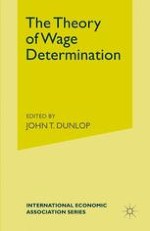1957 | Buch
The Theory of Wage Determination
Proceedings of a Conference held by the International Economic Association
herausgegeben von: John T. Dunlop
Verlag: Palgrave Macmillan UK
Buchreihe : International Economic Association Series
Enthalten in: Professional Book Archive
